Speakers
Day 1 – Nov. 16 (Wednesday) Main Venue The Convention Center of Macao Science Center
Day 2 – Nov. 17 (Thursday) Main Venue(The Convention Center of Macao Science Center)
Day 2 – Nov. 17 (Thursday) Special Session at the University of Macau
Day 2 – Nov. 17 (Thursday) Special Session at Macao Institute for Tourism Studies
Chen Fenglin
Beijing Normal University - Professor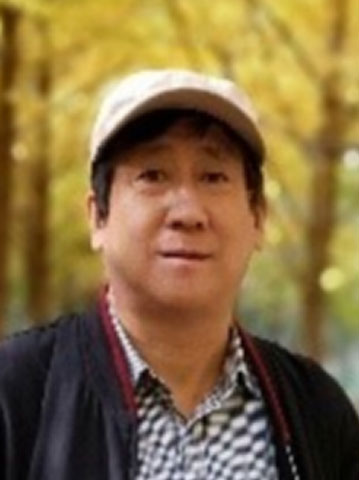
Profile
Chen Fenglin, Ph.D. in History, was Professor at the Department of Diplomacy, China Foreign Affairs University in Beijing. He is now Professor and Doctoral Supervisor at the School of History, Beijing Normal University. His research interests include Japanese history, East Asian history and Oriental diplomatic history. He has published nearly 100 papers in such journals as World History, Contemporary Asia-Pacific, Journal ofHistoriography, and Pacific Journal. He authored A History of Postwar Japan-Taiwan Relation, co-edited Developments of Oriental Diplomatic History, Oriental Diplomacy and Taiwan, Japan in Oriental Diplomatic History, Oriental Diplomacyand the Korean Peninsula Issue, Comparative Theory of Eastern and Western Culture and Diplomatic Strategies, and The Rise of India and Oriental Diplomacy, to name a few.
Speech title
The Maritime Silk Road from the Perspective of Oriental History -- An Investigation Centered on the Research of Japanese Scholars
Abstract
日本學者在近百年時間裡,對橫亙東方歷史若干世紀的海上絲綢之路進行了創造性的卓有成效的研究,推出許多有價值的著作,總結了人類交往的歷史經驗與方法,建立起縝密開闊的海洋知識體系。東方人開闢的海上絲綢之路歷史悠久,涵蓋廣闊,連結了東方與西方、古代與近代,帶來的社會變遷意義重大。把海上絲綢之路放置整個東方歷史的總座標中,思考它的時空地位、作用與價值,是極有意義的探討。絲綢之路對人類的最大貢獻,是溝通了東方與西方以及東方國家內部的交流交匯,實現了人類文明成果共用,在交流中共同走向時代的高處。
Susan Denyer
ICOMOS - Senior World Heritage Adviser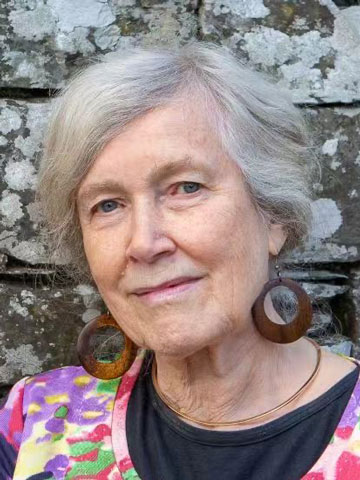
Profile
Susan Denyer is Senior World Heritage Adviser, ICOMOS. She is involved in the evaluation of World Heritage nominations and the state of conservation of World Heritage sites outside the UK. and has undertaken international missions for ICOMOS in Europe, Asia, the Middle East and Africa. For the past 19 years she has been part of the ICOMOS team at UNESCO World Heritage Committee meetings. During that time she was involved in the development of the Concept Paper, the Thematic Study and the framework for nominations of the Silk Roads land routes. Previously she worked for the National Trust, in museums, and as lecturer, including six years in East and West Africa, and has been Chair of BASIN, an international network for low-cost housing, and Secretary of INTACH UK, (the Indian National Trust for Art and Cultural Heritage, UK). She has published widely on cultural landscapes and is an occasional lecturer at various universities.
Speech title
Maritime Silk Routes and the World Heritage Convention: ICOMOS Scoping Study
Abstract
There is much interest in exploring how Maritime Silk Routes relate to the World Heritage Convention and whether they can be considered as an integrated network similar to the Silk Road land routes, or whether alternatives approaches are needed. The presentation will discuss the context within which the ICOMOS Scoping Study will be undertaken, and some of the specific challenges and opportunities that it will be considering.
Tim Williams
University College London - Professor
Profile
Research expertise in urban archaeology, Silk Roads, archaeological heritage management, and World Heritage, especially cultural routes and cultural landscapes. Expert on UNESCO serial trans-national Silk Roads nomination; and UNESCO South Asian Silk Roads project; undertook ICOMOS Silk Roads thematic study; UK ICOMOS representative on ICOMOS Committee on Archaeological Heritage Management. Teaching: MA Archaeology of the Silk Roads; MA in the Management of Archaeological Sites; MA Applied Heritage Management; MA Archaeological Heritage Management in Asia. Fellow Royal Asiatic Society; former editor-in-chief international journal Conservation & Management of Archaeological Sites.
Speech title
The Maritime Silk Routes: the interconnected seas
Abstract
The nature of maritime interactions changed with time and tides. Technologies and skills developed, altering ship building, seafaring, and navigation, and through these, the nature of interactions along the MSR. Not all exchanges were peaceful, not all were beneficial, but all impacted upon the communities they touched. These exchanges have left tangible and intangible traces across a vast region. We face numerous challenges in preserving this material, but the potential, to weave complex and engaging narratives, is exciting.
Jun Kimura
Tokai University - Associate Professor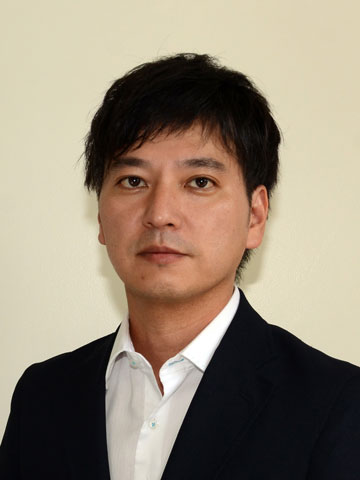
Profile
Dr. Jun Kimura is a maritime archaeologist and Associate Professor at Tokai University. He is an advisory member of the national committee for underwater cultural heritage under the Agency for Cultural Affairs (ACA), the Ministry of Education, Culture, Sports, Science and Technology, JAPAN. He is a bureau member of the ICOMOS International Committee on the Underwater Cultural Heritage (ICUCH). He has a number of underwater survey and excavation experience and has expertise on underwater cultural heritage protection and human capacity building in Asian-Pacific regions, worked with UNESCO regional offices. His scholarly publications include a book titled Archaeology of East Asian Shipbuilding Tradition (University Press of Florida) and he has contributed to the book chapters of Silk Roads: Peoples, Cultures, Landscapes and the Maritime Silk Road (Amsterdam University Press).
Speech title
Enhancing Public Awareness and Communities’ Engagements with Maritime Cultural Heritage
Yoshifumi Ikeda
Kokugakuin University - Professor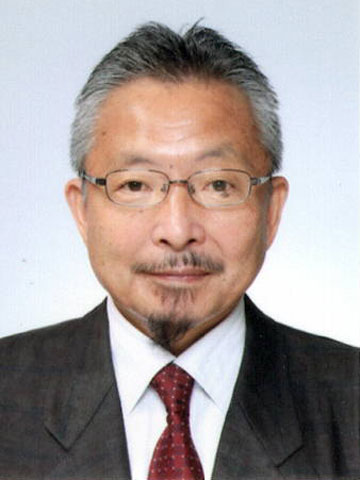
Profile
Yoshifumi Ikeda is a member of the ICOMOS Japan and a chair of the national committee for underwater cultural heritage of the ACA. He is currently a Professor of the Organization for the Advancement of Research and Development at Kokugakuin University, Japan. Before that he was a Professor in the Department of the Global and Regional Studies at the University of the Ryukyus in Okinawa until 2021. Ikeda has broad experience in archaeology in Okinawa and underwater archaeology in his long-term career. His representative achievement includes the successful identification and excavation of the sunken ships of the Yuan Dynasty’s fleets at the Nationally Designated Takashima Underwater Site.
Speech title
Enhancing Public Awareness and Communities’Engagements with “Maritime Cultural Heritage”
Speech title
An archaeological study on historic anchors gives us the better understanding of the historical transition of the voyage and shipping of Maritime Silk Road. A small object like the anchor is, however, not necessarily recognized among the public as its importance composing the Maritime Silk Road heritage. Crowdfunding is an effective measure to finance the public awareness and engagement with “Maritime Cultural Heritage”. It is often pointed out that it is difficult to get public recognition of underwater archaeological sites and objects. Except for those sites in coastal environments, sunken heritage in particular is not accessible heritage without diving skills. Following scientific surveys, maritime and underwater cultural heritage only become visible for many of us when artifacts are being lifted from the water. A crowdfunded maritime project led by the municipal office of Matsuura city in Japan raised a thirteenth century wooden anchor from a Yuan era ship has demonstrated that such approach can propel the public support for the preservation of maritime cultural heritage. The project has also exemplified that the crowdfunded preservation work of a movable relic like this historic anchor even helps public awareness on sunken heritage. Referring to the project, we recognize there can be many types of valuable artefacts composing maritime cultural heritage that represents the historic voyages and networks of the “Maritime Silk Routes”.
Roland Lin
UNESCO World Heritage Center - Project Officer, Asia and the Pacific Unit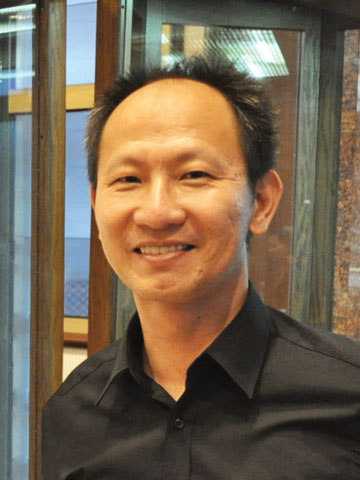
Profile
Prof. Roland Chih-Hung LIN, Professor, PhD. City planner and art historian. Focal point for World Heritage Cultural Landscapes and in charge of managing “Heritage; Cultural Landscape and Silk Roads Safeguarding projects” at the Asia-Pacific Unit of the World Heritage Centre, UNESCO. French national, born in Taiwan in 1967, living and working in Paris since 1991, working at UNESCO Headquarters in France since 1997. He is a Research Fellow in the Centre de Recherche sur Extrême-Orient de Paris-Sorbonne (CREOPS, Paris-Sorbonne University). He also teaches and in charge of the Chair «Asian Cultural Landscape and Heritage Preservation Study» in the École Pratique des Hautes Études (EPHE, Paris). He holds Visiting/Guest Professorships and PhD students Directorship at Tianjin University (Tianjin), Tongji University (Shanghai) , South China University of Technology (Guangzhou) and Macao City University (Macao) in China.
Prof. Lin has published prolifically, authoring four academic works/books on landscape, historic cities, and World Heritage issues in English, French and Chinese - The Intention of Landscape Representation: from the Case of Qianlong Jade Mountain (Rêve de jade ; les jades paysagers de l'ère Qianlong) was published in French by Paris-Sorbonne University Press in 2005. Historic cities and World Heritagewas published in Chinese by Taiwan Commercial Publishing House in 2010. World Heritage and Historical Cities in the Perspective of Cultural Diversity was published in Chinese by Tongji University Press (Shanghai, China) in 2013. Qufu, Birthplace of Confucius – Towards a Sustainable City was published in English, French and Chinese by Tongji University Press (Shanghai, China) in 2018. He has also written over eighty specialized papers on the need for safeguarding world and cultural heritage in Asia.
Speech title
Significance, Opportunity and Challenge of Cultural Landscape and Historical Settings Preservation and Conservation Along the Silk Roads
Speech title
In 1988, UNESCO launched its Integral Study of the Silk Roads: Roads of Dialogue project, as part of the World Decade for Cultural Development. Its objective was to highlight the complex cultural interactions which arose from the encounters between East and West and helped shape the multiple identities and rich common heritage of Eurasia. Through international scientific expeditions, seminars and meetings, and by adopting a multidisciplinary approach, the project promoted research on subjects related to the study of the Silk Roads. By virtue of the synergy established at every stage between researchers and the media, and thanks to the concrete nature and visibility of its activities and results, the project renewed interest in the Silk Roads worldwide.
Li Li
China Academy of Cultural Heritage - Associate Dean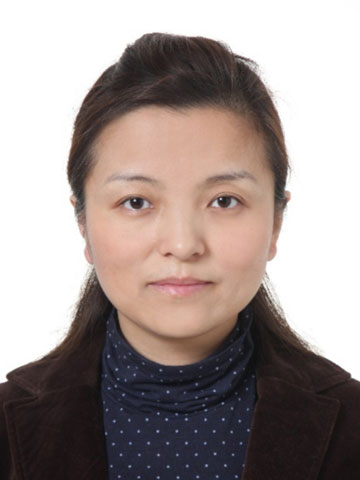
Profile
Li Li, with a Ph.D in Global Architecture from Osaka University, Japan, is Vice President and Research Librarian of China Academy of Cultural Heritage. Focusing on works related to the protection and research of geotechnical relics, she is Principal Scientist of the "Research on the Rock Mass Stability Prediction and Reinforcement Technology of Grotto Temples”, a national key R&D project of the Ministry of Science and Technology of China, and is General Director of the 2021 "Nationwide Investigation on Grotto Temples ", in charge of the "14th Five-YearPlan for the Protection and Utilisation of Grotto Temples", the preservation with technologies of the World Cultural Heritage site, Chengde Mountain Resort, and its surrounding temples, the conservation project of Sichuan and Chongqing grottoes, and the research on materials of ancient architectural sites, among other preservation projects and heritage planning of important cultural monuments. Li has made a series of research achievements in cultural heritage protection theory, deterioration mechanisms, research and development of protection materials and their application, having authored and published more than 30 academic papers on using technologies to protect grotto temples and rock cultural heritage and four monographs/translated works. She has more than 10 national invention patents, which she autorized for general use. Li Li is also Vice Chairman of the Protection and Reinforcement Engineering Professional Committee for Monuments and Sites at the Chinese Society of Rock Mechanics and Engineering, and Vice Chairman of the Professional Committee for Grotto Temples at ICOMOS China. Li has won Second Prize of the National Science and Technology Progress Award and First Prize of the Science and Technology Progress Award in Gansu Province. She is a researcher funded by the Ten Thousand Talents Programme of the Organization Department of the CPC Central Committee, and was honoured as a National Labour Day Female role model.
Speech title
Value and System of Maritime Silk Road Heritage in China
Abstract
發言將重點對中國海絲體系進行闡釋、以南海交流活躍區與澳門為例進行案例分析、最後簡要介紹海上絲綢之路遺產的保護工作和規劃思路。
Jiang Bo
Shandong University - Professor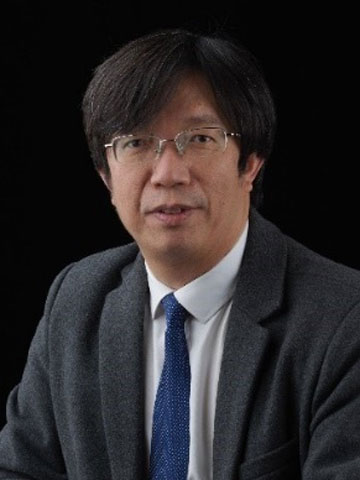
Profile
Jiang Bo is a leading talent in Philosophy and Social Sciences under the national Ten Thousand Talents Programme, a National Cultural Eminent Expert and a talent of the Four Batches Project by the Publicity Department of CPC Central Committee. He is also Vice Chairman of the International Council on Monuments and Sites (ICOMOS), Vice chairman of ICOMOS China, Vice President of Chinese Overseas Transportation History Research Association, and Executive Deputy Director of the Professional Committee on Underwater Archaeology at Institute of Archaeology, CASS (Chinese Academy of Social Sciences). He has worked at the Institute of Archaeology, CASS, China Academy of Cultural Heritage, the Underwater Cultural Heritage Conservation Center of the State Administration of Cultural Heritage. He was a visiting scholar at Harvard University and the National Gallery of Art in Washington. Jiang is currently Distinguished Professor at the Institute of Cultural Heritage of Shandong University.
Speech title
Study of the Maritime Silk Road from Underwater Archaeology
Abstract
海上絲綢之路是東西方文明海上交流的通道。二十世紀中期以來,通過水下考古在海上絲綢之路沿線航道上發現了許多古代沉船,成為古代東西方海上交通的考古實證。印尼海域發現的“印坦沉船”“黑石號沉船”和“井里汶沉船”,時屬唐五代時期,沉船出水的中國文物如長沙窯、繁昌窯、鞏縣窯瓷器和南漢國鉛錢、“桂陽監”銀錠等,反映了9-10世紀時期,東亞、東南亞和印度洋海域的文明交流,古典時代的海洋貿易體系初顯端倪。“南海I號”“華光礁一號”“後渚沉船(泉州)”“漳州聖杯嶼沉船”,以及東北亞海域發現的“新安沉船”和東南亞海域發現的“鱷魚號沉船”,是宋元時期古代中國與東北亞、東南亞乃至印度洋海域開展海上交流的重要水下考古成果,中國的福船成為暢行東西方的主要船型,而中國的絲綢、瓷器、鐵器成為通行海洋世界的大宗貿易品,香料、象牙、名貴木材等舶來品也紛紛登錄中國,古典時代的海洋貿易進入繁盛時期。明清時期,“鄭和下西洋”“隆慶開海”成為中國走向海洋貿易大國的標誌性事件,“南澳一號”“碗礁一號”“珊瑚島沉船”等成為該時期水下考古的重要成果,在越南等地也發現了不少同時期的沉船。進入十五~十六世紀的“大航海時代”以後,西方殖民貿易體系逐漸取代古典時代的海洋貿易體系,但中國廣州“一口通商”的機制仍在發揮重要影響力,中國東南沿海地區的帆船,依然活躍在東北亞、東南亞和琉球航線。這一時期水下考古發現了不少“大航海時代”的帆船,如“聖迭戈號”“勒拿號”沉船等。水下考古發現的不同時期的沉船,生動展示了古代海上絲綢之路的歷史圖景,成為我們探討東西方海上交流的考古實證材料,彌足珍貴。
Sun Jian
National Center for Archaeology - Deputy Director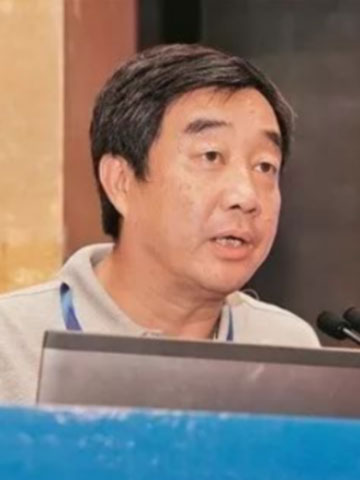
Profile
Sun Jian is a researcher at the Archaeological Research Center of the State Administration of Cultural Heritage and leader of the Nanhai No.1 Shipwreck Archaeology Team. He graduated from the Department of History of Nankai University in 1987 and began to engage in underwater archaeology in 1994. In the past 10 years, he has participated in the underwater archaeology investigations of the Yuan dynasty shipwreck in Suizhong, Liaoning, Wanjiao No.1 shipwreck in Fujian, Huaguang Reef No. 1 shipwreck in Xisha Island, Nanhai No.1 shipwreck in Yangjiang, Guangdong, and Nan’ao No.1 shipwreck in Nan’ao Island, Guangdong.
Speech title
Underwater Archaeological Discoveries and Research in the View of the Maritime Silk Road
Abstract
船舶是溝通中國與世界的橋樑,也是海絲文化的載體。海上絲綢之路上發現的沉船,表明不同文明間的廣泛交流。中國海洋文明源遠流長,在世界航海史、文化交流上所具有的有極其重要地位,在海上絲綢之路中,既是文明傳播者也是受惠者;對世界文明進步作出了貢獻,也因交流融合而獲益。通過沉船的水下考古工作,能更加真實、深入地瞭解中國古代海洋貿易、對外交流等歷史面貌,為了解、研究不同地區間的交流融合,相互學習,共同發展提供給了鮮活可靠的標本。發現於各海域的沉船,文明互鑒的真實記錄,是寶貴的文化遺產。
Tim Winter
National University of Singapore - Professor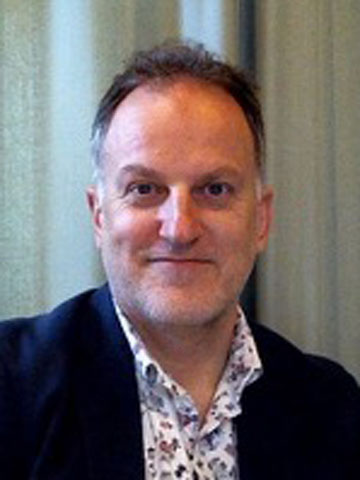
Profile
Tim Winter is Professor and Senior Research Fellow at the Asia Research Institute, National University of Singapore. He was previously an Australian Research Council Professorial Future Fellow and is a Fellow of the Australian Academy of the Humanities. As a leading scholar in the field of heritage diplomacy and Silk Road internationalism, he has been a guest lecturer at various universities in China and has recently undertaken consultancies for UNESCO inn these areas. His latest books are Geocultural Power: China’s Quest to Revive the Silk Roads for the Twenty First Century (University of Chicago Press 2019) and The Silk Road: connecting histories and futures (Oxford University Press, 2022).
Speech title
Conceptualizing the Maritime Silk Road for International Cooperation
Abstract
The Maritime Silk Road is fast emerging as a platform for international cooperation across multiple sectors. This presentation examines how the Maritime Silk Road should be developed and conceptualised in ways that look to both the past and the future. It argues that the Maritime Silk Road is far more than a narrative of history of connection and trade, and rather it should be understood as a mechanism for forging new forms of dialogue and international cooperation. At a time of increasing geopolitical complexity and closed borders, cultural internationalism remains an important resource for maintaining regional and even global stability, and continues to be the central pillar of UNESCO’s efforts. This presentation considers what role Maritime Silk Road internationalism can play in these emerging futures.
Feng Jiang
South China University of Technology - Professor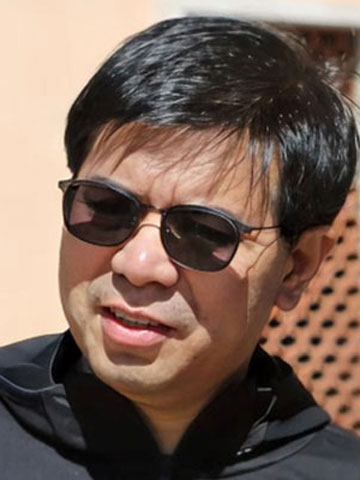
Profile
Dr. Feng Jiang is Professor of South China University of Technology (SCUT) and Director of SCUT Architectural History and Culture Research Center. He is also a member of the Academic Committee for Built Heritage of Architectural Society of China, a member of the editorial committee of journals such as Architectural Heritage and Journal of Architectural History, a member of Guangdong Expert Committee on Cultural Relics, and an expert member of Guangzhou Protection Committee on Cultural Relics Management and Historical and Cultural Cities. He was visiting scholar at Chinese University of Hong Kong and Polytechnic University of Turin in Italy. He undertook the unpopular subproject of 'subjects in extinction' of the team project of the National Social Science Fund of China, A Study on the Interactive Influence of Eastern and Western Architectural Culture in the Period of Canton Trade System, among other researches related to the architectural sites of the Maritime Silk Road.
Speech title
Port, Hinterland, and Chain: Internal logical thinking of the historical sites of the Maritime Silk Road, taking Guangzhou as an example
Abstract
1986年,聯合國教科文組織在海上絲綢之路上發起了一次遠征之旅。廣州是海上航線的16個區域間節點之一,自西元前2世紀以來,一直是世界上重要的港口城市,保留了海上絲綢之路的豐富遺產。
在《The Silk and Spice Routes》一圖中,聯合國教科文組織描述了全球絲綢之路網絡及其沿線節點城市。然而,作為大宗商品產地的腹地、在運輸中形成完整生產鏈條的河流沿線與廣州港和海上線路之間的關係並未得到體現。
應該如何看待編織網狀的海上航線的點狀港口城市、面狀的腹地與線形的連接線之間的內在邏輯?本文以對廣州的調查和思考為例進行相關的探討。
Zhang Xiaobin
Guangdong Cultural Relics and Archaeology Institute - Associate Dean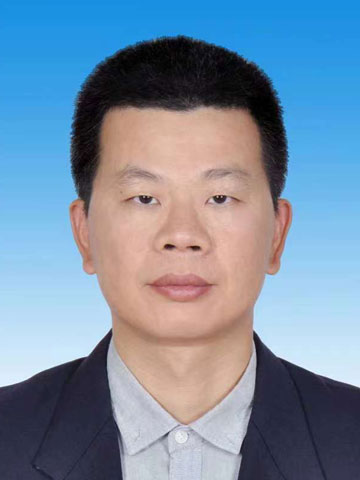
Profile
Zhang Xiaobin is Vice President and Associate Research Librarian at Guangdong Provincial Institute of Cultural Relics and Archaeology and also a PhD candidate in Archaeology and Museology, School of Sociology and Anthropology, Sun Yat-sen University. In recent years, he has participated in and taken charge of projects including Investigation and Research on Relics of the Maritime Silk Road in Guangdong, the Archaeological Investigations of Cultural Relics in Mount Danxia, Exhibition on Achievements by Guangdong Provincial Institute of Cultural Relics and Archaeology, and Studies on the Conservation and Utilisation of Provincial Cultural Relics Protection Units in Guangdong.
Speech title
The Function and Value of the historic sites on the Maritime Silk Road in Guangdong from a cultural perspective
Abstract
文化線路是為了完成和實現特定的目的而具有特定功能的交通線路。海上絲綢之路作為一條典型的文化線路,在兩千多年持續不斷的交流過程中,展現了線路的貿易功能、交通功能、交流功能、信仰功能和政治功能等本身和衍生功能,使得線路的價值和內涵不斷豐富,有助於更好地理解和闡釋海上絲綢之路的突出普遍價值(OUV)。本文以廣東現存的海上絲綢之路文物史跡為基礎,認為在開展海上絲綢之路遺產遴選時,應關注線路的各方面功能,盡可能將能夠體現文化線路突出普遍價值的遺產點列入到遺產名錄中。
Robert Antony
Shandong University, Visiting Distinguished Professor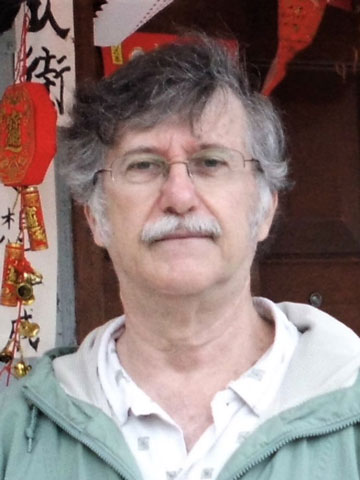
Profile
Robert Antony's research focuses on the history and culture of South China in the early modern period. Applying the methods of history, anthropology, and folk studies.He does research Maritime History, History of Crime, Historical Anthropology, and History of Religion in modern China. His current projects are 'culture of violence' and 'piracy, law, and empire in early modern China'. He is currently a Visiting Distinguished Professor at Shandong University and an Associate in Research at Fairbank Center for Chinese Studies, Harvard University.
Speech title
The Third Silk Road: Pirates, Buried Treasures, and Sunken Ships
Abstract
Today most people know something about the Overland Silk Road, but less about the Maritime Silk Road, although both are equally significant in Chinese and world history. Discussions about both the overland and maritime silk roads have focused on their importance in facilitating international trade and cultural exchanges. However, there is a third silk road, one that is seldom if ever mentioned, but is also important for history, archaeology, and conservation. This third silk road is the Pirates’ Silk Road. Wherever there was a flourishing trade there was sure to be pirates who preyed on that trade, and who also created their own networks of exchange through black markets. Wherever there was cultural exchange, always in the background, there were pirates who actively participated in cultural dissemination. My presentation will develop these themes with specific examples from history (with a focus on East and Southeast Asia). First, I will discuss the routes and maps relating to the maritime silk road and their connections to piracy. Next, I will look at several well-known and less-known pirate lairs and several government military installations along these routes, places where pirates allegedly buried their treasures and where states attempted to suppress piracy. Then I will talk about the exciting field of maritime archaeology to examine what has been uncovered about sunken pirate ships along the maritime silk road. Finally, I will discuss some of the contributions that pirates have made to the dissemination of folk religion and popular culture, and possible contributions that the Pirates’ Silk Road can make to contemporary historical and cultural heritage projects.
Yang Xunling
Macau University of Science and Technology Library - Deputy Director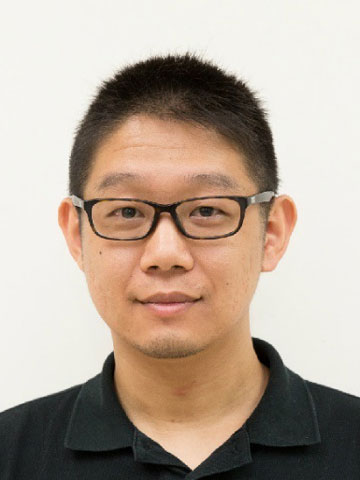
Perfil
Yang Xunling, Ph.D. in International Relations (Sino-Foreign Cultural Exchange), is currently Deputy Director of the Library of Macao University of Science and Technology and President of Macao Map Society. Since 2013, as a core member and co-leader he has participated in the project "Global Mapping of Macao", engaging in the collection, collation and research of Chinese and foreign ancient maps and related documents. He has compiled three published collections of maps of the "Global Mapping of Macao" research series, and has published papers such as Preliminary Study on the Map of Costal Region of South China Drawn during the French Merchant Ship l’Amphitrite's Voyage to China and HoukiangOu and A-Ma-Gau: A Research on Some Toponyms in Xiangshan County – With a Focus on Quanhaituzhu (Commentary of Maps of Entire Sea) of the Ming Dynasty. Yang has also organised more than 10 exhibitions on ancient maps.
Speech title
Research on the painting "Landscape of Macau to Xiangshan"
Abstract
創作於十八世紀下半葉的《澳門至香山城山水長卷》是目前已知描繪澳門氣勢最為恢宏的古代山水長卷。畫卷用接近三分之一的篇幅詳細繪製了繁華鼎盛的澳門港城,同时描繪了從澳門內港航行抵達香山城港口約120華里的航道,揭示了清代澳門與內地城市間的密切聯繫。報告通過相近時期的中外地圖和地誌畫的比對,對圖中地點進行考證和解讀,為當時澳門社會與內地交往提供了生動註解和新的研究線索。
Bao Chunlei
Hainan Museum - Researcher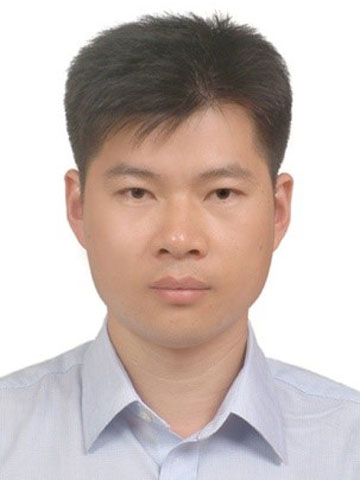
Profile
Bao Chunlei, Ph.D, Researcher, Research Librarian. A Hainan top-notch talent, listed as a "South China Sea Master (Youth Project)" on the first batch of "South China Sea Series" talent cultivation project, third-level position talent of "515 Talent Project", Director of Hainan Doctors Association. Currently, he is Director of the Department for Cultural Relics Protection and Restoration at Hainan Provincial Museum. He focuses his work on the protection of cultural relics by technologies and the protection and research of cultural heritage of South China Sea. He was in charge of eight provincial and national projects and participated in a number of National Social Science Fund projects. He has published more than 30 scientific research papers, obtained two Chinese invention patents and published two monographs.
Speech title
Protection, Development and Utilization of the Cultural Relics of "Huaguang Jiao I" Shipwreck of Southern Song Dynasty
Abstract
“華光礁I號”沉船發掘出水後一直受到人們的關注,與泉州後渚港出土宋船、陽江“南海一號”南宋沉船以及韓國新安元代沉船一樣,無不是古代中國人民智慧的結晶,同時也是福建“福船”存世的明證。而“華光礁Ⅰ號”沉船又是目前僅存六層板海船的標本,對研究我國古代海外貿易史、航海技術、造船技術有著重要的意義。對“華光礁Ⅰ號”沉船文物的保護與開發進行探索,將文物保護和開發利用相結合,力求“讓文物說話,讓歷史說話,讓文化說話”。
Chau Hing-wah
Hong Kong Museum of History - Curator (Special Duty) Archaeology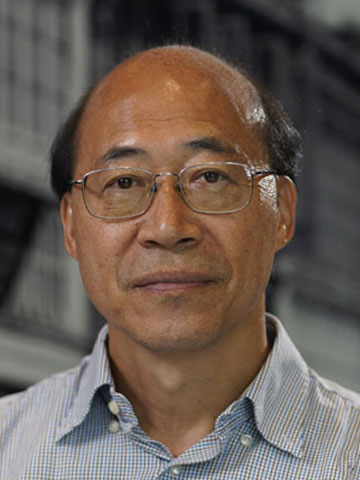
Profile
Mr. Chau Hing-wah received his BA from the University of Hong Kong in 1983 and his MA in Archaeology from the Institute of Archaeology, University College London in 1988. He joined the curatorial grade of the Hong Kong Government in 1985 and has been working for many years in the field of archeology and heritage conservation, both tangible and intangible heritage. He is currently the Curator (Special Duty) Archaeology with the Hong Kong Museum of History and Adjunct Associate Professor with the History Department of the Chinese University of Hong Kong.
Speech title
Hong Kong: A pivotal location of the Maritime Silk Road
Abstract
主要透過考古出土的文物和歷史建築,講述過去二千年來,香港如何在歷代皇朝的海外貿易政策影響之下,逐漸演變成為海上貿易、文化交流的重要節點。
Ma Guang
Macao Polytechnic University - Associate Professor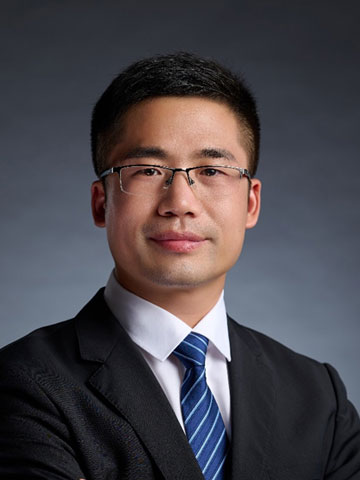
Profile
Ma Guang, with a PhD from Ghent University, Belgium, is Associate Professor at the Faculty of Humanities and Social Sciences, Macao Polytechnic University. He was professor and Associate Dean at the School of History and Culture, Shandong University. His main research interests are in East Asian maritime history during the Yuan and Ming dynasties and modern history of Guangdong, Hong Kong and Macao. He authored Rupture, Evolution, and Continuity: The Shandong Peninsula in East Asian Maritime History during the Yuan-Ming Transition, He has published more than 20 papers in Chinese and English in journals including Journal of Asian History, Modern Chinese History Studies, Journal of Literature, History and Philosophy, with many of his academic achievements having been republished by Xinhua Digest and Renmin University of China’s CSSE (China Social Science Excellence) database. Ma had two projects supported by National Social Science Fund of China and two provincial-level Social Science Planning Projects. He won two Second Prizes and a Third Prize of Shandong Social Science Excellent Achievement Award.
Speech title
Preliminary study for the organization of Ancient Documents and Cultural Relics around the Yellow Sea and Bohai Sea
Abstract
中國領海,既包括南方海域,也包括北方海洋。儘管北方海洋史同樣具有獨特的重要價值,但長期以來學術界存在著“南熱北冷”的現象,對北方海洋史的關注遠遠不足。全面收集和整理環黃渤海歷史相關的文獻和文物資料,挖掘和整理一批中外新史料,有助於全面推動北方海洋史的縱深研究。
Sharif Shams Imon
Macao Institute for Tourism Studies - Academic coordinator of the Cultural and Heritage Management programme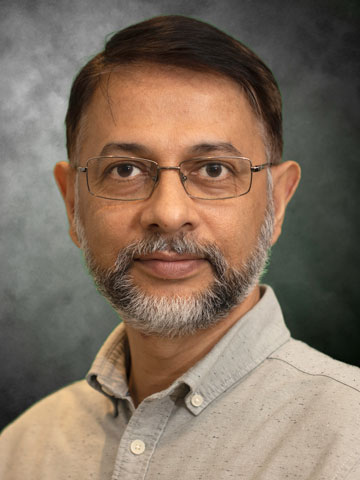
Profile
Dr Sharif Shams Imonspecialises in urban conservation. His teaching, research and professional experience spans more than 26 years, including consultancy for international organisations, UN bodies and governments. He has published more than 40 articles in books, journals and conference proceedings. His work focuses on historic city management, Heritage Impact Assessment, heritage tourism, and heritage interpretation. Currently, he is the academic coordinator of the Cultural and Heritage Management programme at the Macao Institute for Tourism Studies, the president of ICOMOS Bangladesh, and an expert member of the International Committee on Historic Towns and Villages and ICOMOS International Cultural Tourism Committee. He has served in ICOMOS’ World Heritage Panel, evaluated 6 World Heritage nominations as a technical evaluator, advised State Parties on 3 World Heritage nominations, carried out 3 joint Reactive Monitoring Missions for UNESCO and ICOMOS, and designed, managed, and delivered capacity-building training projects for heritage and tourism professionals in 16 countries.
Speech title
Maritime Silk Routes and Historic Urban Landscape Approach
Abstract
Referring to the Chinese section of the Silk Road that covers both land and sea routes, the World Heritage Tentative List text highlights that the Silk Road is not just a trade route; it is “also a cultural route, a religious route, and a political route”. The imprints of something that lasted for almost two millennia and touched and shaped many diverse landscapes in economic, cultural, religious, and political dimensions are also bound to be multicultural, multidimensional, and multi-layered. In the case of the maritime silk sea route, the imprints can be seen in the coastal regions in tangible forms on land and underwater and intangible values, expressions, and practices of the people there. Such routes’ conservation and sustainable management are challenging for both conceptual and practical reasons. This paper reviews the conceptual issues related to understanding historical maritime routes, the conservation challenges that the diversity of such routes poses, and potential strategies for their delineation. Finally, it explores the possibility of applying the historic urban landscape approach to conserving the maritime silk routes.
Nia Naelul Hasanah Ridwan
Research Institute for Coastal Resources and Coastal Vulnerability at the Ministry of Marine Affairs and Fisheries, Republic of Indonesia - Director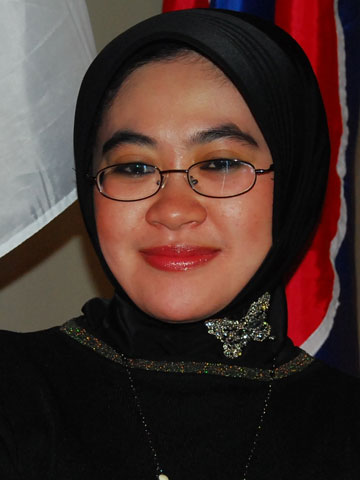
Profile
Nia Ridwan is an underwater and maritime archaeology research scientist and the Director of Research Institute for Coastal Resources and Coastal Vulnerability at the Ministry of Marine Affairs and Fisheries, Republic of Indonesia. Her capacity and interests are underwater cultural heritage (UCH) potential and vulnerability; the interrelation of UCH site and its aquatic environment; sustainable UCH tourism, heritage management and interpretation; UCH public awareness, community engagement,community museum;UCH and the Maritime Silk and Spice Route and maritime network;as well as UCH illegal salvage and illicit trafficking.
Nia was graduated from Archaeology Department, Gadjah Mada University and pursued Master degree in Environment and Heritage at James Cook University, Australia. She has attended Underwater Cultural Heritage (UCH) foundation training and UCH In Situ Preservation trainings organized by UNESCO Bangkok-The Royal Norway in Thailand, as well as several courses on heritage preservation, collection conservation, communication and community organized by SEAMEO SPAFA-ICCROM in Thailand, Singapore, The Philippines, and training held by The Netherlands Cultural Heritage Agency in Brazil.
Nia has led and involved 33 UCH research projects, has written 98 publications, and has been invited as an Invited Speaker at UNESCO Conferences on UCH in Australia, France, Jakarta, India, and also attended UNESCO Expert Meeting on the Serial Nomination of UNESCO World Heritage of the Maritime Silk Routes in UK.
Speech title
UNDERWATER CULTURAL HERITAGE SITES OF MARITIME SILK AND “SPICE” ROAD IN INDONESIA
Abstract
Indonesia is one of the Asian countries to have rich and various Maritime and Underwater Cultural Heritage (MUCH) in its 3,110,000 km² seawater areas, and widely recognized as a maritime country with bustling seafaring and trading activities since centuries ago. Due to its strategic position at the intersection of the Maritime Silk and “Spice“ Road, Indonesian archipelago contains the richness of MUCH including historic shipwrecks, both known and unknown, underwater artifacts, as well as historical landmarks. The MUCH of Indonesia provides a narrative of human’s interaction with the ocean and coastal environments which strengthen cultural identity as well as the maritime link which connects countries along the Maritime Silk Road.
This paper will also contribute to providing an information on the recent discoveries of underwater and maritime heritage playing role in the maritime global commerce in western Indonesia and eastern Indonesia and put on some reviews on the efforts of re-mapping MUCH sites from distributional survey projects to be integrated into the grand scheme of Indonesian One Map Policy of underwater and maritime heritage sites for sustainable development. The discovery of Abang Island underwater site in Riau Archipelago in western Indonesia which lies on the heart of Maritime Silk and Spice Route connecting Indonesia, Malacca Strait, China, Southeast Asia, South Asia, Middle East and Europe, and the findings in Tidore Islands, North Mollucas in eastern Indonesia which is a prominent producer of cloves and nutmeg and one of the key points in the international spice trade targeted by many foreign countries in Asia and Europe are essential. These two parallel position sites on the Equator, with 2,582 km distance showed similar type of artifacts such as Chinese and Southeast Asian stonewares and Ming Dynasty porcelains. Additionally, the Portuguese cannons manufactured by Manuel Tavares Bucaro in Macao were found in North Mollucas.
MUCH conservation and management in sustainable and responsible way must be in line with a concept of Open Access for public and encourage local, regional, and global community involvement. A gallery of sunken shiploads as a place to showcase the underwater remains from shipwreck sites along with the aquarium containing the diversity of marine life which is accessible to the public as a tourist attraction is being prepared by the Ministry of Marine Affairs and Fisheries. It has another role as a training center which will provide on-the-job training to young people regarding maritime archaeology, marine tourism and coastal disaster mitigation. The initiative to display the underwater artifacts also put an emphasis on the need to preserve the findings and disseminate to the wider public contributing to increased awareness on MUCH conservation.
This paper will also share a bottom-up initiative for preserving MUCH through local museum or marine heritage gallery and shipwreck utilization for tourism based on active involvement of the locals with the aid from the central, provincial, and district authorities. Dissemination materials are provided to facilitate public access and motivate local communities to appreciate, protect and conserve MUCH discovered in their surrounding area. Increasing inclusiveness, community participation, providing space for the society to enhance their understanding about maritime and underwater heritage that plays a significant role in international maritime commerce network of Maritime Silk and Spice Road, and contributing to the local’s dignity are significant.
Given the challenging size of Indonesian waters and diversity of the region, and reflecting on the long history of maritime trade and cultural connections, it was clear then that future MUCH activities in Indonesia should seek systematic strategies to formulate a better approach to investigating, conserving, and managing finite and non-renewable MUCH and call on a variety of regional and global cooperation to incorporating the latest development and trends and benefitting from new perspectives and experiences on MUCH protection, conservation, as well as capacity building and its contribution to the advancement of knowledge of maritime connection history of Maritime Silk Road.
Maria José de Freitas
ICOMOS International Scientific Committee on Shared Built Heritage - President
Profile
Architect Maria José de Freitas, is an active professional being the author of a variety of Architectural Renovation projects, in Portugal and in Macau. Maria José received the ARCASIA AWARD, in the category of Architectural Renovation in 2002, with the project Musealization and Renovation of the 5 Heritage Houses, at Taipa Island, Macau S.A.R. The Renovation of D. Pedro V Theater, done in Macau, 1993, for the Orient Foundation, is included in the Macau Heritage List, by UNESCO. She was the Head of the Architectural Centre of the Civil Engineering Laboratory of Macau, in charge of the Coordination of the famous St. Paul's Ruins, included in the Macau Heritage List, by UNESCO, in 1994. From 2003 to 2005, she was the Coordinator of the Sintra World Heritage Center, being the responsible for the preparation and coordination of the development of the Management Plan of Sintra Cultural Landscape, handed over to UNESCO, in February 2005. Nowadays, Maria José is practicing as an active professional and participating in International Forums, for Architectural Preservation and Rehabilitation of Classified buildings. In 2013 during the 8th Silk Road Forum, Maria José was appointed Ambassador of WCO (World Citizens Organization). Member of: ICOMOS Portugal, AAHM, Asian Academy for Heritage Management OA, Architects Association of Portugal AAM, Architects Association of Macau UIA, International Union of Architects AIA, American Institute of Architects.
Speech title
The Maritime Silk Road: The Role Played by Macao
Abstract
From the beginning of time, the Silk Road tied culturally and economically communities from different geographies around common objectives, becoming a model of coexistence of different concepts, a model of tolerance.
The purpose of this paper is to analyse the Macao’s role in the construction of the sea routes and how the city fits into this context.
The legacy inherited from the coexistence of several cultures during almost five centuries of history contributed to the generation of a specific identity incorporating several factors, constituting an important tangible and intangible heritage which was able to be partially preserved. Macau, over time, has been a stage for a meeting between the East and the West, by building and articulating its elements as a unique city, being an example of the challenges, the syntheses, and the rewritings that, in the field of architecture and urbanism, contribute to leave an indelible trace. The historic centre of Macau was recognised by UNESCO as World Heritage Site in 2005.
In this context it is relevant to see what implications this situation might have these days, in light with the Belt and Road initiative - BRI, announced by the President Xi Jinping where Macao has a role to play, taking into consideration the history and the importance given to the connection between China and the Portuguese Speaking Countries using Macau as platform as it was in the past and is projected into the future.
Gamini Wijesuriya
ICCROM - Special Advisor to the Director-General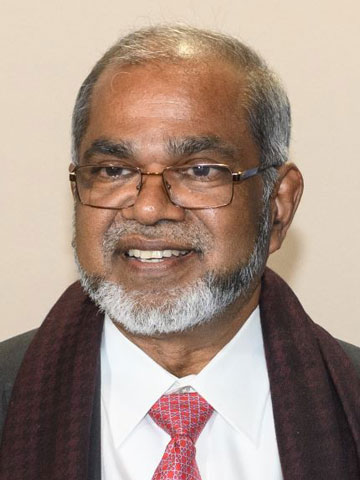
Profile
Dr. Gamini Wijesuriya is the recipient of the prestigious ICCROM award given in recognition of his contributions to the protection of cultural heritage in 2021. He has gained reputation as a leading international specialist in World Heritage with over 40 years of experience. Wijesuriya was instrumental in initiating the ICCROM programme on people-centred approach to conservation and management of heritage (2008) which aims to position people at the heart of the heritage discourse. This was an extension to the living heritage sites programme directed by him. Currently, he is a special Advisor to the Director-General of ICCROM and to the Director of WHITRAP Shanghai.
Speech title
Maritime Silk Road- A Path to Heritage Diplomacy
Abstract
Tangible, intangible, and intellectual heritage recognisable as outcomes of a dialogue of the people along the maritime silk road over the years indeed are great sources to inspire, learn, celebrate, and continue to use. They can enhance heritage inventories of the countries (including World Heritage Listing) which endeavour to protect them. They are already in the national inventories of many countries, but I argue that they should play a role beyond national boundaries, which I would like to call ‘heritage diplomacy’.
In the past, we turned to the West for heritage diplomacy from which we benefitted by gaining modern conservation knowledge. Heritage diplomacy, I am proposing is broader concept and somewhat different. We should look to the countries along the silk road and try to unfold the values embedded in this category of heritage and endeavour to explore innovative ways to celebrate and protect which in turn will guarantee their long-term sustainability.
With the promotion of the people centred approach which aims to place people at the heart of the heritage discourse, we reckon that heritage should play a role in the lives of people- through the four pillars of Sustainable Development. Several ways to achieve this goal will be discussed in this presentation with some examples from Sri Lanka which was an important hub of the maritime silk road.
Hwajong Lee
Hanyang University Museum - Research Professor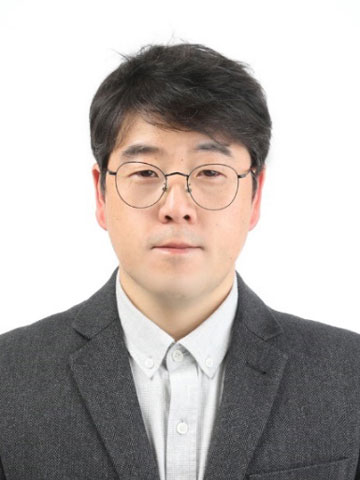
Profile
Hwajong Lee,Research Assistant Professor inHanyang University Museum, senior researcher at Institute of Cultural Properties, Hanyang University.Expert members of National Cultural Heritage Committee of Republic of Korea.Member of International Council on Monuments and Sites.
Speech title
Preliminary approach for Issue and challenge in Maritime Silk Road in Korea
Abstract
This paper is aimed to explore to understand significance and value of Dangseong in the perspective of Maritime Silk Road. Dangseong has been known as an important archaeological site to witness to Matitime Silk Road. However, there are some issue and challenges to understand of wide range of significance and value of the Dangseong. In this end, this paper attempt to review academic studies on Silk Road in Korea and Dangseong in the perspective of Maritime Silk Road. It is expected to identify the issues and challenges for further study on Dangseong for Maritime Silk Road.
